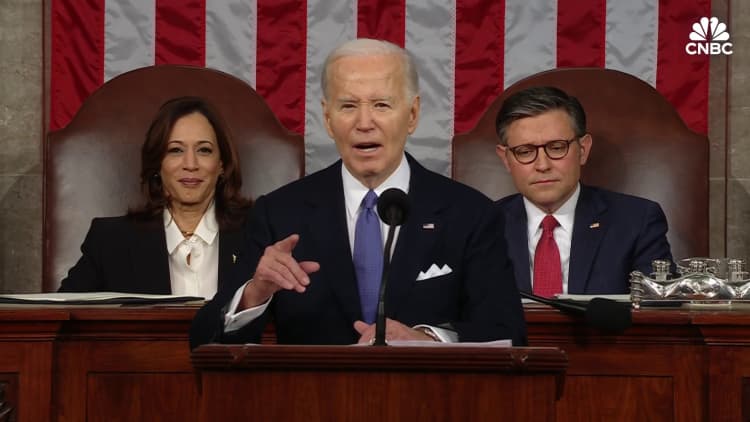Pixelseffect | E+ | Getty Images
Some grocery store products are providing less for your money. And everyone from President Joe Biden to Cookie Monster has noticed.
Blame shrinkflation. The term — which is increasingly used in conversation — refers to products becoming smaller in size, weight or quantity as their prices stay the same or even increase.
Biden took companies to task for shrinking sports drinks and ice cream cartons and providing fewer chips in snack bags, in a pre-Super Bowl video posted on social media.
At the State of the Union, he again took a stand against shrinkflation, complaining that Snickers bars have become smaller.
Mars, the company that makes Snickers, denies the allegation. “The size of Snickers singles and share bars in the U.S. hasn’t been reduced,” a spokesperson for the company said in a statement.
In a more lighthearted exchange, when Cookie Monster posted “Me hate shrinkflation!” on X earlier this month, the White House responded, “C is for consumers getting ripped off.”
“President Biden is calling on companies to put a stop to shrinkflation,” the White House said.
The president has called for a bill to be passed that would give the Federal Trade Commission the authority to put regulations into effect to curb shrinkflation. The proposal would also make it possible for the FTC and state attorneys general to engage in civil actions against companies that engage in the practice.
Where consumers may see shrinkflation
For now, it’s up to consumers to spot the changes companies may make to their products.
Certain products tend to be more susceptible to charges of shrinkflation, according to Bureau of Labor Statistics data cited in a recent Senate report.
Why critics say shrinkflation is the wrong focus
Inflation peaked at 40-year highs in 2022. While the rate of inflation has come down, it is still higher than the Federal Reserve’s target.




